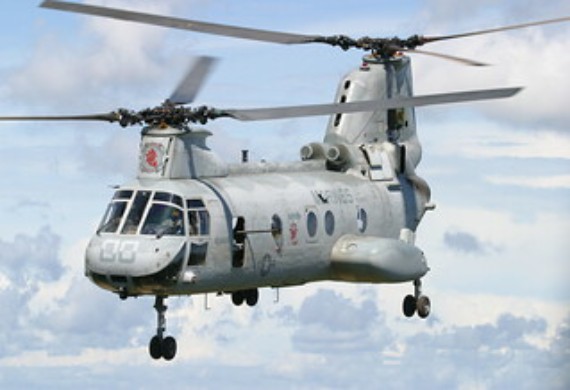
In a first, Female Pilots to Fly Chinook Supply Missions
By: WE Staff | Saturday, 17 September 2022
At a time when India and China are locked in a protracted border dispute, the Indian Air Force has for the first time assigned two female combat pilots to its frontline Chinook helicopter units that are crucially supporting the army's deployments close to the Line of Actual Control (LAC), including transporting light howitzers, in the northern and eastern sectors, officials familiar with the development said on Friday.
Before being transferred to CH-47F Chinook units headquartered in Chandigarh and Mohanbari in Assam, respectively, Squadron Leaders Parul Bhardwaj and Swati Rathore were flying the Russian-made Mi-17V5 helicopters, according to one of the officers quoted above who requested anonymity.
The newest helicopter in the fleet of the air force is the multi-mission Chinook, which was purchased from the US and costs about 650 crore each. 15 Chinook heavy-lift helicopters that were introduced in 2019–20 are used by India.
According to a second official, piloting a Chinook is completely different from piloting a Mi-17 or any other helicopter in the IAF arsenal.
In the midst of the continuing 28-month border dispute with China, the IAF has made extensive use of the Boeing-manufactured helicopter in the northern and eastern sectors; it has used it to ferry troops, replenish the battlefield, and move artillery.
Both Bhardwaj and Rathore had performed accomplishments on the Mi-17V5 cargo helicopters they had previously flown before beginning their new postings with the "Featherweights" Chinook unit in Chandigarh and the "Mighty Talons" in Mohanbari.
Bhardwaj led the first all-female Mi-17V5 flight in 2019, while Rathore, flying a Mi-17V5 in a four-helicopter formation, made history as the first woman helicopter pilot to participate in the 2021 Republic Day flypast over Rajpath (now Kartavya Path).
One of the most crucial missions being carried out by the two Chinook units is transporting the M777 ultra-light howitzers as an under-slung load to forward sites close to LAC, according to army officers with knowledge of the situation.
As part of a broad infrastructure drive to improve military capabilities in the sensitive sector, helipads with the ability to fly Chinooks are being built in remote areas of Arunachal Pradesh for faster deployment of personnel and weapons.
The US-imported M777 ultra-light howitzer has become the focal point of the army's weapon deployment along the LAC to fight the Chinese military build-up, according to the authorities. The gun's tactical mobility gives the army several alternatives for a firepower increase in remote places.
In November 2016, India paid the US $750 million for 145 howitzers. 25 howitzers from the M777 maker BAE Systems were shipped fully assembled, and the remaining guns were manufactured locally in cooperation with Mahindra Defense as part of the Modi administration's Make in India project.
The 155 mm/39-caliber howitzers can hit targets up to 30 km away, but in some places where the topography permits the rounds to travel in rarefied air, they can reach distances of more than 40 km.
The howitzers weigh 4,218 kg and are made of alloys of titanium and aluminium. The weight of 155mm towed guns is double that.
When the Chinook was required to fly from Chandigarh to Jorhat as part of an operational training job, it broke the record for the longest non-stop chopper sortie in India in April. In seven and a half hours, it covered 1,910 kilometres.
Bhardwaj and Rathore have been assigned to Chinook units at a time when more doors have opened for women in the armed forces: the army has allowed them to fly helicopters, the navy is allowing them to serve on warships with their male counterparts, and they will soon begin inducting them into the personnel below officer rank (PBOR) cadre. They are also now qualified for permanent commission in all three services. Additionally, this year saw the first-ever enrollment of female candidates at the National Defense Academy. When the IAF chose to induct women into the fighter stream in 2015, it marked one of the turning points for women in the military.






